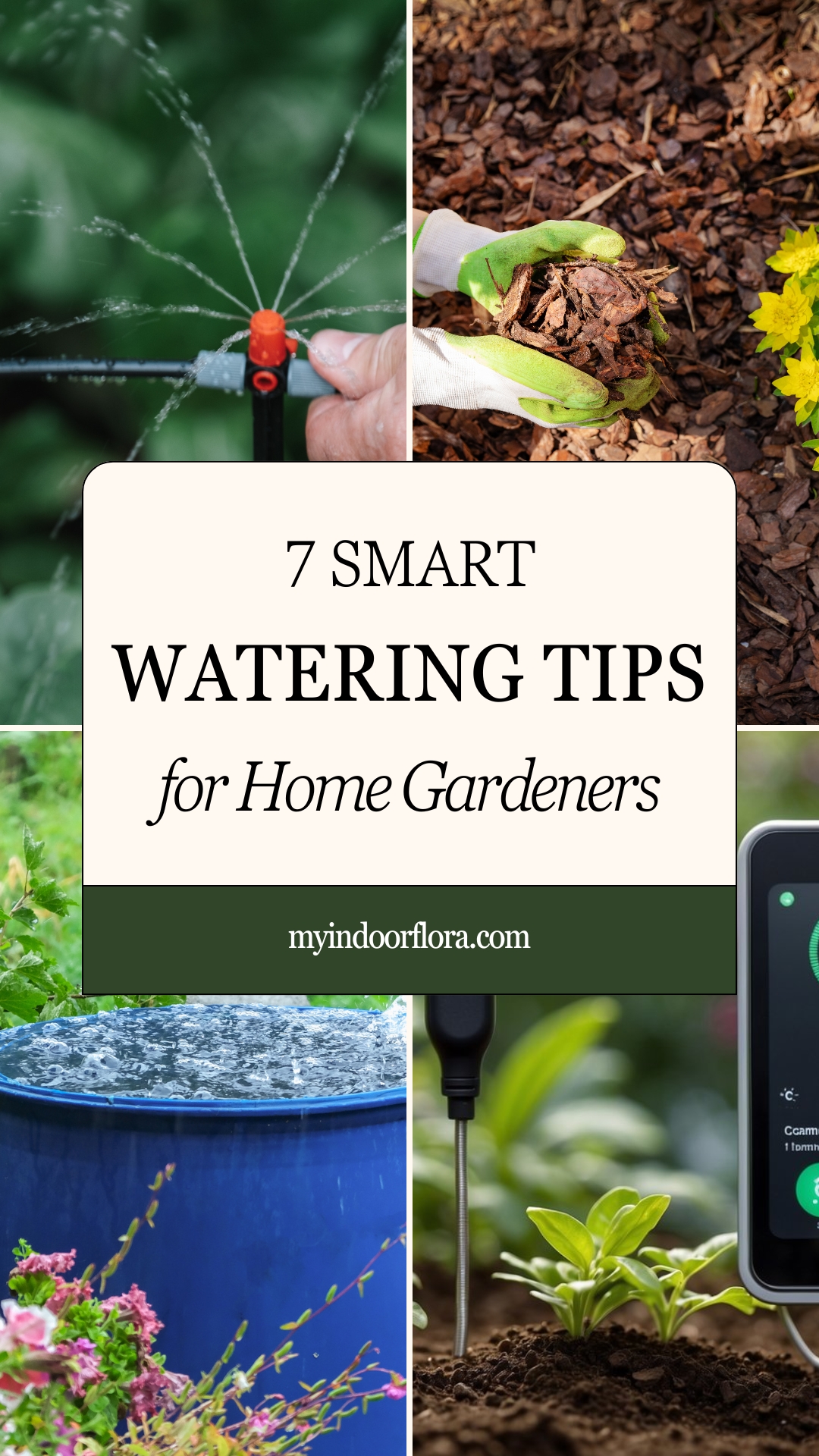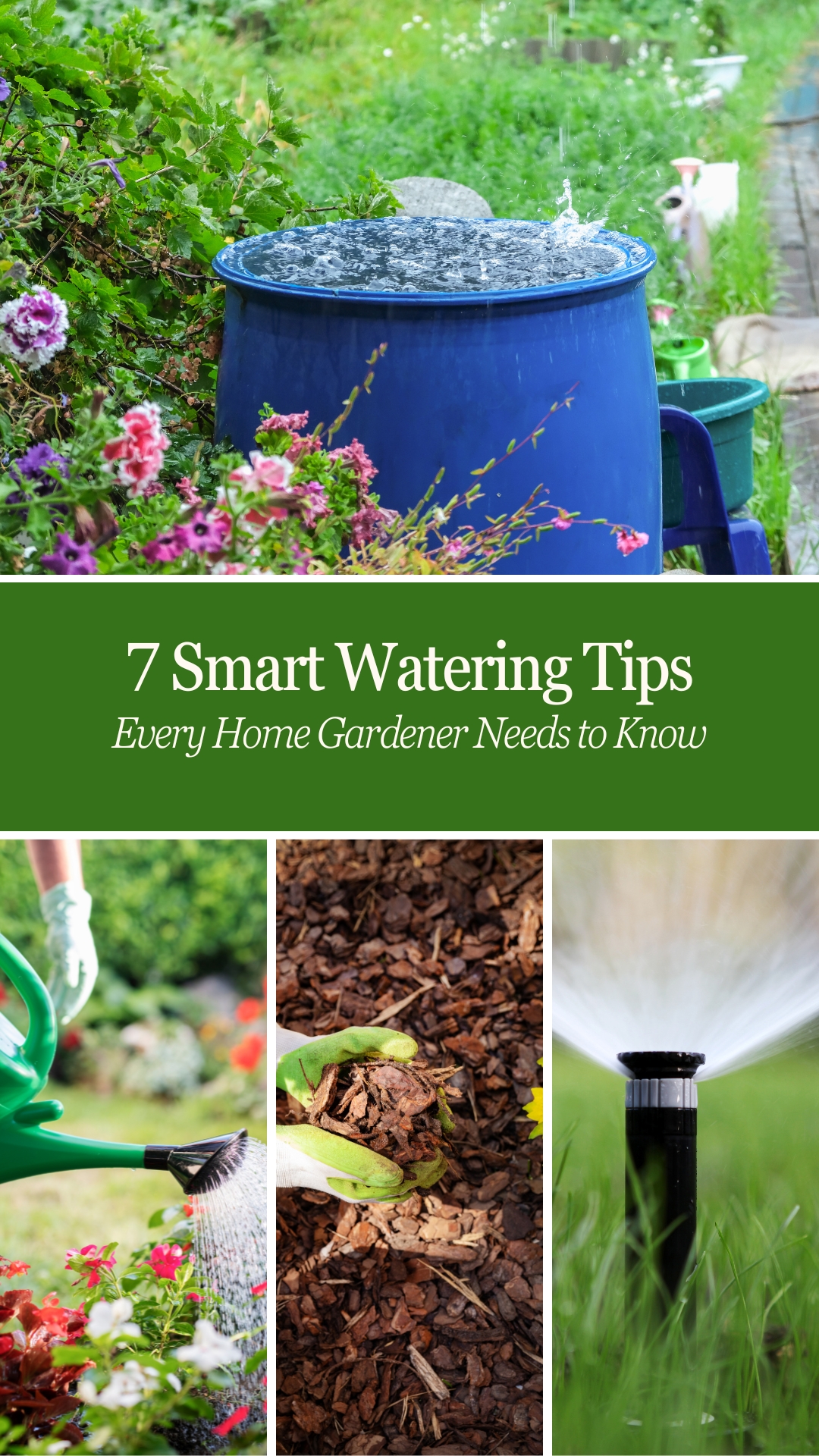Are you tired of guessing how much water your garden really needs? Many home gardeners struggle with keeping their plants healthy and happy, often overwatering or underwatering without even realizing it. Knowing the best watering tips can make a huge difference in your gardening success.

By following a few smart watering tips, you can ensure your garden thrives all season long. Imagine lush plants, vibrant flowers, and bountiful veggies, all because you learned the right way to water them. Let’s get started!
1. Install a Drip Irrigation System

A drip irrigation system waters plants slowly and directly at the soil level. This method ensures that water reaches the roots where it’s most needed, reducing waste. You’ll save up to 50% more water compared to traditional methods like sprinklers.
Drip irrigation systems can be set up with a timer. This allows you to automate your watering schedule, making sure your plants get consistent moisture. No more dragging out the hose every other day!
If you’re tight on budget, you can find DIY drip irrigation kits at garden centers or online. They are easy to install and come with clear instructions. A basic kit usually includes tubes, emitters, and a timer.
Drip systems are great for reducing evaporation and runoff. This is especially helpful in dry or windy areas where water loss can be significant. By targeting the root zone, you’re not wasting water on leaves and stems.
In addition to saving water, drip irrigation can also reduce weed growth. Since water is only delivered to specific areas, weeds don’t get the moisture they need to thrive. This means less weeding for you!
2. Use a Soil Moisture Sensor

Ever wonder if you’re overwatering or underwatering your plants? A soil moisture sensor can help! This handy tool measures how wet or dry your soil is. With this information, you can water your plants just the right amount.
Soil moisture sensors come in different types. Some are simple and inexpensive, while others are more advanced. You can choose one that fits your needs and budget.
Using a moisture sensor is easy. Insert the sensor into the soil near your plants. Check the readings it gives you. If the soil is dry, it’s time to water. If it’s wet, hold off.
This gadget can save you time and conserve water. Your plants will be healthier, too. No more guessing games! Your garden will thank you.
3. Water Early in the Morning

Watering your garden early in the morning is a smart move. Why? Because plants get the water they need before the sun gets too hot. This helps the water reach the roots before it evaporates.
Morning watering also keeps the leaves dry, which reduces the risk of disease. Wet leaves at night can lead to fungi and mildew problems.
Another benefit is that early watering helps your plants stay strong through the day. Plants take up water and nutrients better when they are cool and hydrated.
So, set your alarm a bit earlier and give your garden a good drink before breakfast. Your plants will thank you!
4. Utilize Mulching Techniques

Mulching can help you retain moisture in the soil. Lay down a layer of mulch around your plants. This can be straw, wood chips, or grass clippings.
Mulch helps reduce water evaporation. Your soil stays moist for a longer time. This means you won’t need to water as often.
Mulching also keeps your soil cool. Hot soil can stress plants. A cool bed is a happy bed.
It helps keep weeds in check. Fewer weeds mean less competition for water. Your plants will thank you.
Apply mulch 2-3 inches deep. Too much can suffocate roots. Too little won’t be effective.
Always keep mulch a few inches away from plant stems. Too close might cause rot.
5. Collect Rainwater for Watering

Why pay for water when nature gives it for free? Collecting rainwater is a smart and eco-friendly way to keep your garden hydrated. You can easily set up a rain barrel under a downspout. This collects water every time it rains.
Rainwater is better for plants because it’s free from chemicals found in tap water. Your plants will thrive on this natural source. Plus, using rainwater helps conserve water, saving you money in the long run.
Make sure your rain barrel has a secure lid to keep out debris and insects. You can also attach a hose to the barrel for easy watering. This method is simple and requires minimal effort once set up.
Installing a rain barrel is easy. You can find one at a garden center or online. Some regions even offer rebates for installing rain barrels, so check your local programs.
Rainwater collection is not just for big gardens. Even if you have a small space or just a few potted plants, you can still benefit. A single rainstorm can provide enough water for several days of watering.
6. Group Plants with Similar Water Needs

Grouping plants with similar water needs can save you time and water. When you plant thirsty plants together, you can water them all at once without over-watering others.
Dry-tolerant plants like succulents and cacti thrive with less water. They can be grouped together and watered less often. This helps them stay healthy and save water.
Plants like tomatoes and cucumbers need more water to grow well. Grouping them together ensures they get the moisture they need. This makes your watering routine easier.
Try to think about your garden’s layout. Grouping plants with similar needs also makes your garden more efficient. It’s a win-win for you and your plants!
7. Employ Self-Watering Planters

Ever forget to water your plants? Self-watering planters might be your best friend. These containers have a water reservoir at the bottom. The soil soaks up water when it gets dry, keeping your plants hydrated.
Self-watering planters are great for busy people. You don’t have to water every day. Just fill the reservoir once a week, depending on plant needs and weather.
Using these planters can also prevent overwatering. The plants only take as much water as they need. This helps avoid soggy soil and root rot.
Garden sizes don’t matter. You can find self-watering planters for small indoor plants or large outdoor garden beds. Look for ones with a clear reservoir to easily check water levels.
Self-watering planters can also save water. Because the water is stored in a reservoir, less evaporates. This is a small but eco-friendly choice.
Want to take a trip? No worry about your plants drying up! These planters can keep them healthy for days. Just give the reservoir a good fill before you leave.
Feel like adding a little tech? Some self-watering planters come with indicators or even smartphone connectivity. These features make plant care even easier.
Understanding Soil Moisture Levels
It’s crucial to know how wet or dry your soil is to keep your plants healthy. We’ll look at why soil composition matters and easy ways to check soil moisture.
The Role of Soil Composition
Soil makeup greatly affects how it holds water. Sandy soils drain quickly but dry out fast. On the other hand, clay soils hold water longer but may drain slowly. Loamy soils, a mix of sand, silt, and clay, offer the best balance for most plants.
Different plants need different moisture levels. For example, cacti thrive in dry, sandy soil, while ferns love moist, loamy soil. Knowing your soil type helps you water the right amount.
How to Measure Soil Moisture
There are easy ways to find out how wet or dry your soil is. One simple method is the “finger test.” Stick your finger into the soil about two inches deep. If it feels dry, you need to water. If it’s wet, hold off.
You can also use a moisture meter. These handy tools measure how much water is in the soil. Just push the probe into the ground, and read the level on the gauge. These devices give you a more accurate reading.
Mulch can help maintain moisture. Adding a layer of mulch on top of the soil reduces water evaporation. Plus, it keeps the soil temperature more stable. This simple step can go a long way in keeping soil moisture levels ideal.
Efficient Watering Techniques
Efficient watering techniques save time, reduce water waste, and promote healthier plants. Two popular methods are drip irrigation systems and soaker hoses.
Drip Irrigation Systems
Drip irrigation systems deliver water directly to the roots. This reduces evaporation and ensures plants get the right amount of water. They use emitters, which are small devices that release water slowly.
Benefits:
- Water Efficiency: Cuts water use by up to 50%.
- Healthier Plants: Prevents overwatering and disease.
- Ease of Use: Easily automated with timers.
Installation Tips:
- Choose Emitters Wisely: Select based on plant needs.
- Regular Maintenance: Check for clogged emitters.
- Adjust Seasonally: Adapt for weather changes.
Soaker Hoses
Soaker hoses are porous and release water along their length. They lie on the soil and water slowly seeps through.
Benefits:
- Even Watering: Provides consistent moisture.
- Easy Setup: Just lay and connect to a water source.
- Cost-Effective: Generally cheaper than drip systems.
Usage Tips:
- Keep Hoses Close to Plants: Ensure water reaches roots.
- Cover the Hose: Use mulch to reduce evaporation.
- Monitor Soil Moisture: Adjust watering times based on soil wetness.
Weather-Based Watering
Adjusting your watering schedule according to the weather can save water and keep your garden healthy and vibrant.
Using Rain Sensors
Rain sensors are a handy tool for any gardener. These devices attach to your sprinkler system and automatically stop watering when it rains.
Installing a rain sensor can save you from over-watering, which helps to conserve water. Rain sensors are easy to set up and can usually be connected to existing irrigation systems. Prices range from $20 to $100, depending on the features and brand.
If you live in an area with unpredictable weather, a rain sensor is especially useful. It ensures your plants get the right amount of water, even when you’re away or busy. Imagine not having to worry about whether you turned off the sprinklers when it starts to rain!
Timing Watering with Weather Forecasts
Keeping an eye on the weather forecast can help you decide when to water your garden. If rain is expected, you might skip a watering session.
Set reminders to check the forecast daily. Free apps are available on smartphones that can make this task easier. Try to water plants early in the morning when the sun is not too strong. This allows the water to absorb without evaporating quickly.
If a heatwave is coming, increase the frequency of watering but do it in shorter intervals. This helps to prevent the soil from drying out too much. Using weather forecasting for watering decisions can save up to 30% of water usage.

